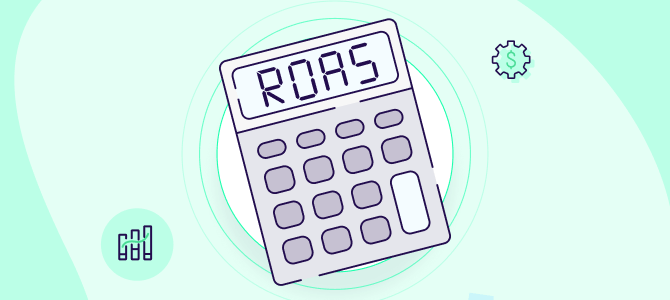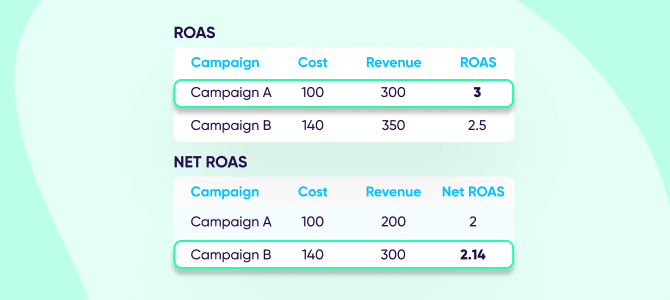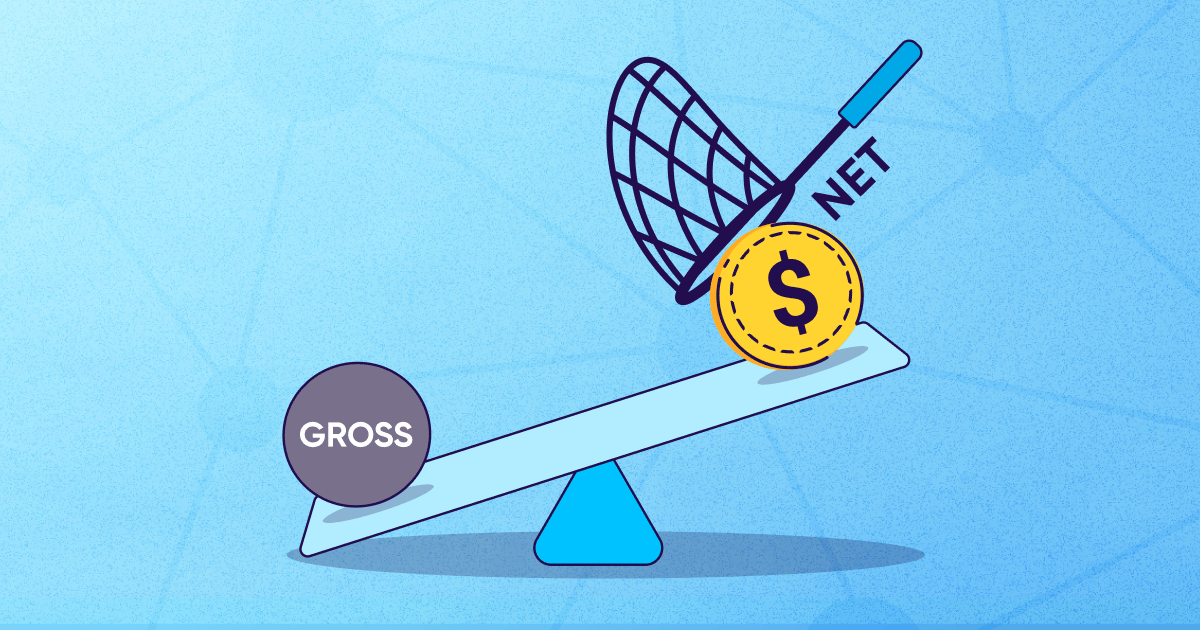
How can you truly trust your ROAS?

Here’s a tough one for you — Do you actually know your return on ad spend (ROAS)?
If you said yes, then consider this: there’s a good chance you’ve got it wrong.
ROAS is the golden metric. The one number containing your ad spend and revenue and tells you what your next step should be. It tells you where to spend more (or less), and which media source is positive or negative for your return on investment (ROI).
That’s why it’s so crucial to get it right.
But the best marketers know that the ROAS data they’re looking at often isn’t their true ROAS, and that can hamper their optimization efforts.
With today’s economic turndown, the focus has shifted from growth to profitability — and that means understanding your true ROI and ROAS is more mission-critical than ever before.
It’s not always easy, but when you get this right, it’s a game changer.

Whether you’re maintaining your own ROAS measurement infrastructure, or using a third-party solution, here are some points to watch out for that could make your data doubtful, and what you can actually do about it.
Spend and revenue – A match made in heaven
To give a clear picture of your ROI, ad spend and revenue must marry beautifully together.
That means your data has to follow two simple rules:
1. It works.
2. It’s together.
The “it works” should be pretty self-explanatory.
As for the “it’s together” — well, the bond between your cost and revenue data is crucial. Often, a delay in one means the whole ROI picture is not as fresh and accurate as it could be.
Let’s explore how to get the most out of your data.
Ad spend – Connecting the dots
Delays aren’t the only thing that prevents you from seeing your true ad spend on your way to the perfect ROAS. The lack of standardization — i.e. the fact that different sources talk about your costs differently — can also stand in your way.
When your cost is fragmented across different channels and multiple platforms, you can master each silo separately — but you’re still not getting the whole picture. Different granularities and different rules mean you’re comparing apples to oranges.
The only way to fully understand your ad spend is to aggregate it under one roof and standardize it, making it unified, comparable, and trustworthy.
Ad revenue data – Freshness vs accuracy
How fresh is your ad revenue data? And if it is fresh — how accurate is it? If you can answer these questions, you might be wondering which is more important: freshness or accuracy?

The short answer is — both. Choose freshness, and you’re losing your data accuracy. Choose accuracy, and you’re overlooking your revenue day (or day+1) results.
Our data shows that for some partners, when comparing SDK revenue (Day 0) to S2S revenue (Day+1) we see up to 17% improvement in total reported revenue data.
First, let’s talk about freshness. The need for speed. Getting the data in real-time, or near real-time, is crucial for gaming apps, especially hyper casual apps. Why?
Because churn rates on the first day post-install are massive, and you need to quickly understand your traffic quality, where you’re bleeding budget while getting “churners”, and where you should shift budgets to get better users.
Fresh ad revenue data isn’t just a matter of FOMO — it’s sometimes that impacts your app’s marketing strategy.
But while you’re busy with the here and now, you might be basing your decisions on inaccurate data. And that means your entire lifetime value measurement in the following days will be inaccurate.
Accuracy, on the other hand, is crucial if you can afford to wait a few days for the data to get accurately reported by a server-to-server connection. Sitting in front of accurate data is what makes you confident in your decision making, and will bring better results.
But while you wait for accurate data — cracking your knuckles knowing that this data is the real deal that will allow you to optimize like a pro — you might already be late to the optimization party.
You’d already bled quite a portion of a budget before you saw that awaited data, and your optimization, confident as it is, could have come much earlier.
So, do you go for freshness or accuracy? Comedian Jerry Seinfeld phrased it so well in his bit about cold medications: “This one is quick acting, that one is long lasting. Mmm… when do I need to feel good? Now or later? I don’t know!” Of course, we want both — and the same is true for your ad revenue.
That is in fact the answer of this zero-sum data game. You need a solution that will give you both fresh data during the revenue day and accurate data that will get automatically updated during the days that follow.
When you get that balance right, you’ll get a quick decision during the revenue day to stop massive bleeding and optimize your campaigns, but still be able to access accurate data to make sure you’re moving forward with confident decision-making further down the line.
In-app purchases and subscriptions revenue data
In-app purchases (IAP) and subscription revenue — the more the merrier, right? Well, we think that “the truer the merrier” is a more accurate way of putting it.
Much of the reported revenue coming from IAP and subscriptions is actually invalid, duplicated, or even fraudulent. Invalidated transactions may be pushing your graphs upwards, but this is the most common misrepresentation of IAP revenue data.
App marketers are basing their decisions on this data, which they should be confident about.
Another reason IAPs are inaccurate is lack of follow up reporting. If the user gets a refund, or if their pending transaction is canceled, this will not be reflected in your final revenue data.
We found that up to 2% of the reported transactions are duplicated and up to 3% of the revenue is refunded.
What does this mean for your bottom line?
OK — here comes the numbers bit.
App marketers and app owners are always yearning to see that positive bottom line. But what about the bottom line of the bottom line? The true — net, post-tax-deduction, post-store-commission — bottom line?
The gross bottom line you’re looking at is inaccurate. It doesn’t reflect how much money you actually have in your pocket to calculate your ROAS and optimize wisely.
Here are some of the things that get in the way.
Store commission complexity differs between IAP and subscriptions. Not only that, but the business logic of Apple and Google’s app stores, where commission is based on the app’s performance, makes net revenue a crucial metric in revenue data. You can’t just deduct 30% and be done with it.
Same goes with tax. If you’re not deducting tax —a complicated logic of its own, based on users’ geography — you’re seeing a misrepresentation of your IAP and subscription revenue. And, if you report your in-app advertising (IAA) net and your IAP gross, then your ROAS is automatically skewed.

It might seem complicated at first, but there are a few key things to remember when it comes to getting a true picture of your IAP and subscription revenue:
- Validate every purchase against a receipt. Put an end to fraudulent transactions.
- Cover all follow up events. Keep your data complete and accurate with any refund, cancelation, or abortion of pending transaction.
- Focus on your net revenue. Make sure you’re looking at net figures for both IAA and IAP, to ensure you’re calculating your ROAS accurately.
It’s time to trust your ROAS
As we’ve seen, lots of inaccuracies can distort your ROAS data. Revealing your true ROAS is not an easy task, but you should strive to clean up as many data inaccuracies as you can to achieve a truer, more accurate, and more complete picture to be able to make better decisions.
No matter which revenue model you’re employing — especially if it’s a hybrid model (IAA + IAP) — you need to be aware of the challenges. Ad revenue, in-app purchases and subscriptions all suffer from different aspects of inaccurate ROAS. And apps that employ a hybrid revenue model equal double trouble.
The power to optimize with confidence like never before is in your hands. Yes, you’ll need to put the work in — but seeing what’s under the veil will change the way you look at your cost and revenue forever, and — make your optimization efforts bear some delicious fruits.
Key takeaways
- ROAS data is a key metric when it comes to optimizing your campaigns, showing you where and how to allocate your budget.
- Many factors can lead to inaccuracies in your ROAS data, and wrong data leads to wrong decisions.
- You need to make sure you’re showing ad spend consistently.
- When it comes to your ad revenue data, it’s crucial to strike a balance between freshness and accuracy.
- To calculate ROAS accurately, you need to be aware of your net bottom line — after deduction of tax and app store commission.




